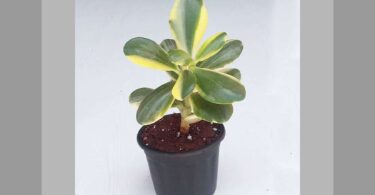Radko Tichavsky is a Czech born Mexican Agrohomeopath. He is a co-founder and director of Instituto Comenius in Mexico and author of Handbook of Agrohomeopathy, 2007 (Spanish) and Homeopathy for Plants, 2009 (Spanish), Organon de la Holohomeopatía and creator and teacher of Holohomeopathy.
Agrohomeopathy Course!
Radko Tichavsky is now offering a one semester virtual course in Agrohomeopathy (in English). You can learn how to define and analyze holons and how to repertorize the specific homeopathic treatment beyond just disease or pest names. You can find out more here: www.icomenius.edu.mx

Organon de la Holohomeopatía
Six years in the making, it is the latest book by Radko Tichavsky, researcher on the application of homeopathy in agriculture. This Spanish language book covers homeopathic interventions in agriculture from the holistic view, allowing greater certainty in repertorizations. It addresses a novel concept of metabolic similarity, not only among plants, but also among different species of the animal and plant kingdom. It studies the formation and dynamics of attractors, areas of greater vitality within the holons and coexistence units of different living organisms. Holohomeopathy is a fascinating contribution to the application of homeopathy to plants. It allows one to discover a universe of surprising relations in vital dynamism. It puts into the hands of the agricultural producer a valuable tool for the successful handling of pests and diseases in crops of any size. For ordering or information: [email protected]
Hello Mr. Tichavsky,
I replanted a Butterfly Bush and then it dropped its leaves and looked dead. I used Epsom salts and it’s started coming back with leaves but they’re still sparse. Is there any homeopathic remedy/cell salt I could use?
Thank you
Jessica
Radko Tichavsky:
Hello Jessica,
Buddleja spp. popularly called Butterfly Bush requires well-drained soils. Be sure to mix in the soil some river sand, as this will help the plant develop properly. From homeopathic remedies you can use Phosphorus 6 CH (once a week during a month sprayed foliarly) and Silicea terra 12 CH (this last remedy should be applied only once). To ensure its best growth Buddleja sp. requires to live with mycorhyzic fungi associated to its root system. Look for an old and vigorous Butterfly Bush in your community. Dig a little in the soil until you discover its fine roots and add a fist of this soil along with a few roots to the soil around your plant. In this way you will help establish mycorhyzic fungi in the roots of your plant and these will help your plant settle better and more vigorously in its new home.
[hr]
Hi Mr. Tichavsky,
I have attached 2 photographs of the insects infesting my yucca plant in Nashville, Tennessee, in the southeastern U.S. I looked online to determine what the name of the insect may be that has a black body with a red head and I came across this Web page: http://www.austinbug.com/miridae2.html Miridae
As you can see from the photographs, the insects have already caused damage to some of the leaves and are working on damaging other leaves. What might I do to remove the infestation of the mirids and allow the plant to rejuvenate?
Thank you
Irucka Embry
Radko Tichavsky:
Hello Irucka,
The insect in the image is effectively Halticotoma valina, a frequent pest in Yuccas spp., which disappears easily after applying homeopathic treatment with Nicotiana glauca 4 CH or Nicotiana tabacum 4 CH. They are especially effective if applied at the beginning of the season, since this insect generates between 5 and 6 adult generations per year and is extraordinarily active. You have to add a little of olive oil as an adjuvant and apply only in the afternoon.
[hr]
Dear Dr. Tichavsky,
Please find the attached photo of my Bitter Gourd plant which was affected by Downy Mildew. The growth of the plant was stunted like with a virus disease. Is there any homeopathy medicine for this? The total area is one acre.
Thank you,
S. Soundarrajan
Radko Tichavsky:
Dear Mr. Soundarrajan,
Downy mildew is actually a quite varied complex of opportunistic fungi, among others Peronospora sp., Bremia sp., Plasmopara sp., Basidiophora sp. and others.The main cause is humidity conditions coupled with overexposure to nitrogen fertilization on the one hand, and calcium deficiency on the other. Plants with excess nitrogen (from natural or artificial origin) develop large soft tissues which facilitate the entry and development of fungi. Apply preventively and also when the affection is advanced, Calcarea phosphorica 6 CH alternated with Cuprum metallicum 6 CH, and Ferrum phosphoricum 6 CH, all with Aloe vera sap as an adjuvant, and also add Vitamin C in microdoses in the irrigation of plants. An excellent preventive and corrective remedy is Pycnosporus sanguineus 6 CH, a highly competitive wood decomposing fungus with opportunistic fungi species that form the complex known as downy mildew.
[hr]
Greetings Mr. Tichavsky,
I planted Papaya seedlings in a field on May 4th – 2019. Now I find distorted leaves and infected (viral?) plants (see photo below). We use no chemical fertilizer. I’m from Maharashtra India. Rainfall is about 12 to18 inches. Weather is hot 38 to 45 degrees this summer.
Thank you
Harshal Patil
Radko Tichavsky:
Dear Harshal,
I’m proud and happy every time someone reports that they don’t use arotoxics or artificial fertilizers. I congratulate you on it. The plant in the picture does not appear to have symptoms of virosis, but rather it expresses the typical symptoms called “Hook Hand”, a consequence of a red spider attack. It is a microscopic mite, difficult to see with the unaided eye, but easily localizable with stereoscope or microscope and even with the normal magnifying glass. It lives on the back of the leaves where the adults and eggs are located, together with threads of spider web. Despite its name, the red spider is not a spider (it is a mite) nor is it red (it is rather transparent) and attacks papaya plants especially in the hot and dry season. Sulphur 6 CH will be of great help against the red spider. You must apply it after sunset together with Opuntia ficus indica sap as an adjuvant. One application every three days for two weeks should be sufficient and you will observe the growth of new and vigorous shoots.
As an additional suggestion is to look for an inoculum of Glomus sp. a mycorrhizal fungus that invigorates the papaya plants, improves their vitality enormously, makes available the phosphorus for the plant and prevents an infinity of diseases in the papaya. Preventively you can apply Calcarea phosphorica 6 CH and Ferrum metallicum 6 CH with Opuntia ficus indica sap as an adjuvant.
[hr]
Dear Mr. Tichavsky,
Please let me know the best trees to plant outside a house bordering a motorway to filter out the pollution. The house in question is in Cyprus, so it would have to be a species indigenous to the area. It is rumoured that the regular fir trees here create their own toxins so I was wary of planting them. Thanks for your thoughts on this.
Thank you
Elizabeth Adalian
Radko Tichavsky:
Dear Elizabeth,
The most prevalent pollution in Cyprus is formed by nitrogen oxides and sulphur dioxide. Also, benzene is a typical traffic related pollutant, together with carbon monoxide. The ground level ozone is an additional problem in Cyprus, and also Sahara dust storms, that cause elevated PM concentrations. As you can see, it is a combination of factors. Some trees native to Cyprus may be an option, especially considering their adaptation to the area in their low water requirements, to serve as a source of food for birds and insects in the area and have a good response to pollutants: Golden Oak (Quercus alnifolia), Strawberry Tree (Arbutus andrachne), Terebinth (Pistacia terebinthus), Myrtle (Myrtus communis) and Sumach (Rhus coriaria) are some options to consider.Thank you for caring for the planet and for nature by generating a naturalist consciousness.










Hi Mr. Tichavsky, thank you for answering my question concerning the insects on the Yucca species. I have some follow-up questions below:
1) Is the 4 CH potency the same as a 4 C potency (as noted by homeopathic pharmacies)?
2) Is the Nicotiana tabacum the same as Tabacum (which is the name that I have seen in homeopathic pharmacies)?
3) Do you have any suggestions for homeopathic pharmacies that have Nicotiana glauca 4 CH available?
Thank you.
Irucka